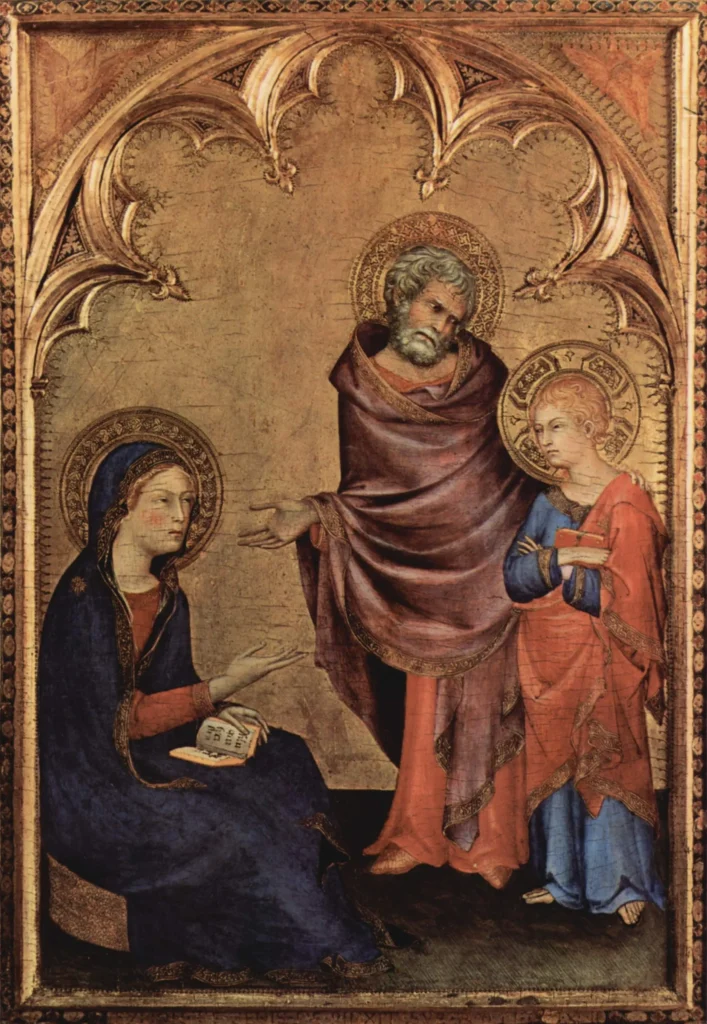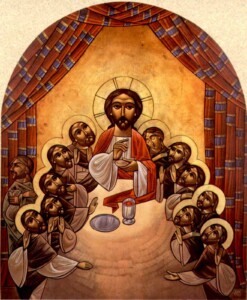During Lent, the Church urges us to pay attention to what we eat. Let’s focus our attention today on a significant fact about food. Almost all of what we eat was either once alive or comes from an animal that is or was alive. We eat plant products, like fruits, vegetables and legumes. We eat animal products like eggs, milk and cheese. And then we also consume animals themselves: fish, cows, pigs, chickens, and so on. We sometimes speak of a food chain, the top of which is inhabited by predators, whether it be lions or humans.
What this reveals to us is that our life is borrowed, in some sense, from other living things. This is true of all animals; plants receive their life from sun and water, but then other animals make use of the life that is in these plants to obtain necessary nutrients and complex molecules necessary for more complex life. While we might see ourselves as the top of the food chain, this reflection also reveals our total dependency on other living things for our own life. We can’t survive without plants and animals reproducing, growing, and, most significantly, dying so that we may sustain our own life.
The Lenten fast should spur us to reflect on the primal need for eating, and the significance that our life is not self-generated. We are dependent on other living things, and ultimately, our life comes from God Himself. We do not generate our lives; we receive them from God, and God sustains our life through His gifts of sun, water, plants and animals. We, of course, are meant to participate in this sharing of life by cultivating the garden of this world. But the sustaining and handing on of life has become toilsome, painful, and in the case of childbirth, where a child’s life is fully sustained by the life of its mother, even dangerous. This toil and pain is a result of sin. Work has become labor, laborious, difficult, refractory.
In the gospel of John, Jesus repeatedly teaches us about food and about work. He does this, though, in order to bring new life and a new notion of work into the world. He has come into the world to share His own life with us. He becomes our food, laying down His life for us on the Cross as the Lamb of God, inviting to His Supper. Unless you eat of the flesh of the Son of Man and drink His Blood, you have no life in you. In point of fact, Jesus’s own life is not even His own; he receives from the Father. “As the living Father sent me, and I live because of the Father, so he who eats me will live because of me.” This is quite an astonishing statement. As the Son of God receives life from the very Father, we are being invited at the Eucharistic to receive this same life from God through the sacrifice of His Son Jesus Christ.
Elsewhere, Jesus says, “Do not work for perishable food, but for the food which endures for eternal life [John 6: 27].” And again, “My food is to do the will of him who sent me, and to accomplish His work [John 4: 34].” This work is the harvest of souls, the return of humanity to its rightful Father and God. But idea that the food that sustains Jesus is the doing of the Father’s will is significant for us today on Ash Wednesday. Let me begin to tie up all of these ideas.
As we undertake the fast today, and as we practice various kinds of fasts and abstinence from meat during Lent, let us be conscious of the fact that we are dependent on God. As we experience hunger, let us recognize that this hunger is meant to be a hunger for the true Bread of Life, the Holy Eucharist, in which we receive true and abiding life. To receive this new life fully, we must consent to die to ourselves, to take up our Crosses daily in imitation of Jesus. This is to share in His work, and so, paradoxically, to be fed by the will of the Father. The ashes that we will receive in a moment are a sign of our consenting to die to sin and the old life. Let us remember especially the catechumens and candidates who will receive the Holy Eucharist for the first time at the Easter Vigil, and who are striving to do the will of God and change their lives throughout this holy time.
And then, as we see around us birds returning, plants gradually coming back to life, let us turn our thoughts to the glorious Resurrection of Jesus from the dead, in which we hope to share. And with these thoughts, let us lay aside every weight and sin that clings to us, and run with a lighter step the race that God has set before us, looking always to Jesus who has opened to us the way to eternal blessedness. May He be praised forever. Amen.

